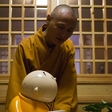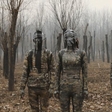

The Exhibition AI WEIWEI translocation – transformation is on view from 14 July to 20 November at the 21er Haus, Vienna.
Ai Weiwei is one of the most renowned artists of our time. He is presenting his monumental works in 21er Haus Vienna for the first time.

"Everything is art – everything is politics" says Ai Weiwei. The conceptual artist, documentary filmmaker, and activist, is an active critic of the regime in his homeland of China and has been repeatedly repressed as a result. Through his works he also frequently makes reference to current political issues such as the refugee crisis in Europe. Displacement, migration, and free movement as triggers for transformative processes in humans and objects is a theme that runs like a common thread through the artist's life.

These themes are also the focus of his exhibition in Vienna. The centerpiece is the ancestral temple of a tea trading family from the Ming dynasty (1368-1644), the main hall of which will be faithfully re-created in the 21er Haus. The 14-meter high wooden temple is made from over 1,300 individual pieces and this will be the first time it is exhibited outside of China. The 21er Haus was also built for a different location and a different function, as a temporary pavilion for the Brussels World's Fair of 1958, and as such the two buildings will create a fascinating dialogue. Other works will complement this large-scale installation. Some of these works are also to do with China's tea culture and its political aspects, and are closely related to the history of the original owners of the temple.

Ai Weiwei also addresses the current refugee situation with "F Lotus", an installation created out of 1,005 used life jackets. Arranged like a calligraphic F, the 201 rings made from five vests each float like lotus flowers on the water of the Baroque pond in the park of the Upper Belvedere. And in the staircase of the Upper Belvedere, Ai Weiwei causes the creature Lu to rise like a dragon. The filigree sculpture was made by hand in the style of traditional Chinese dragons: Thin bamboo poles form the frame, onto which silk is glued. The figure represents one of the many mythical creatures from the Shanhaijing (the Classic of Mountains and Seas), the oldest handed-down collection of Chinese mythology.


